It’s the last trading day of 2023, and not much is happening around the market. Stocks have edged higher this week, and bonds rallied on light volume. We expected this much, as we previously wrote, but this could be the “calm before the storm” with important economic data coming over the first two weeks of January. Employment data will be released next Friday, while a fresh batch of inflation data will be due the following Thursday. In addition, FOMC minutes will allow the Fed to tailor its tone, considering it will have a preliminary look at the inflation data.
From an index perspective, the S&P 500 remains overbought territory as this advance loses steam. At the same time, the VIX index appears to be ripe for a spike in volatility. In his research, Forecasting a Volatility Tsunami, the author presents a method for predicting spikes in the VIX index. It involves measuring the dispersion of both VIX and VVIX (volatility of the VIX) and looking for points when both are below a certain threshold. As shown below, we recreated the indicator, and it’s flashing the first signal since December 2019. As with any indicator, it’s not perfect, but it’s telling us we have reached conditions that preceded past spikes. It’s probably a coincidence that it comes as we are flirting with all-time highs, but this could also be the calm before the storm.
As the seas become calm and the tide pulls back in the ocean before a massive wave, so too does volatility’s dispersion narrow before an eventual spike higher. While not every defined spike is preceded with volatility’s standard deviation declining to a low level, only a handful of signals are not followed by large increases in VIX readings. In other words, not every spike follows a signal but nearly every signal is followed by a spike.
Andrew Thrasher, CMT
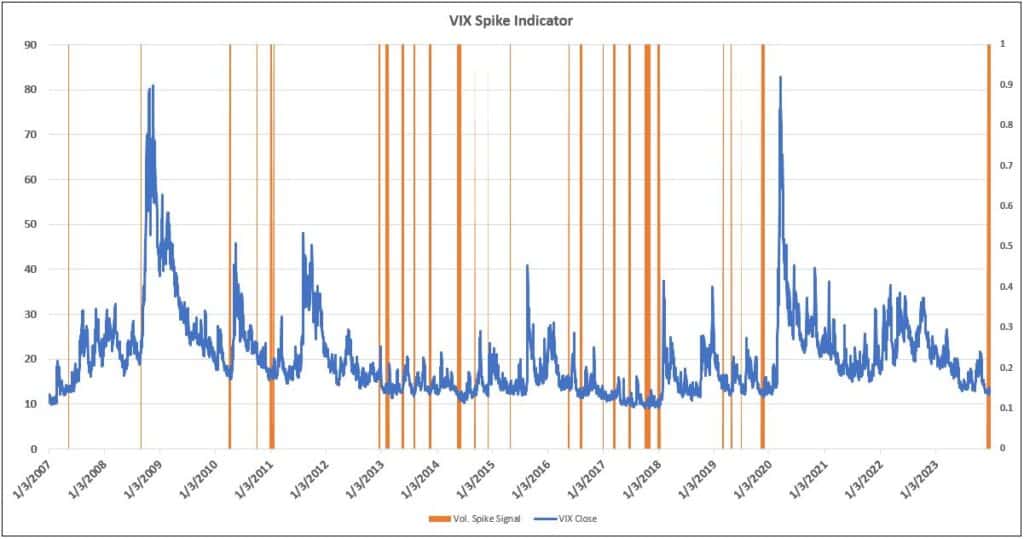
What To Watch Today
Earnings
- No notable earnings reports today
Economy

Market Trading Update
As noted in yesterday’s commentary, the market is hanging in just shy of all-time highs for the S&P 500. As we enter the last trading day of 2023, anticipation of the market hitting a record is high. The market is currently trading well above the 50- and 200-DMA, as shown, but such does not mean a market correction is imminent. We still expect a short-term correction to relieve the more overbought conditions, but as noted yesterday, with portfolio managers window dressing portfolios into year-end and volume light, there is little risk of a downturn over the next couple of days.
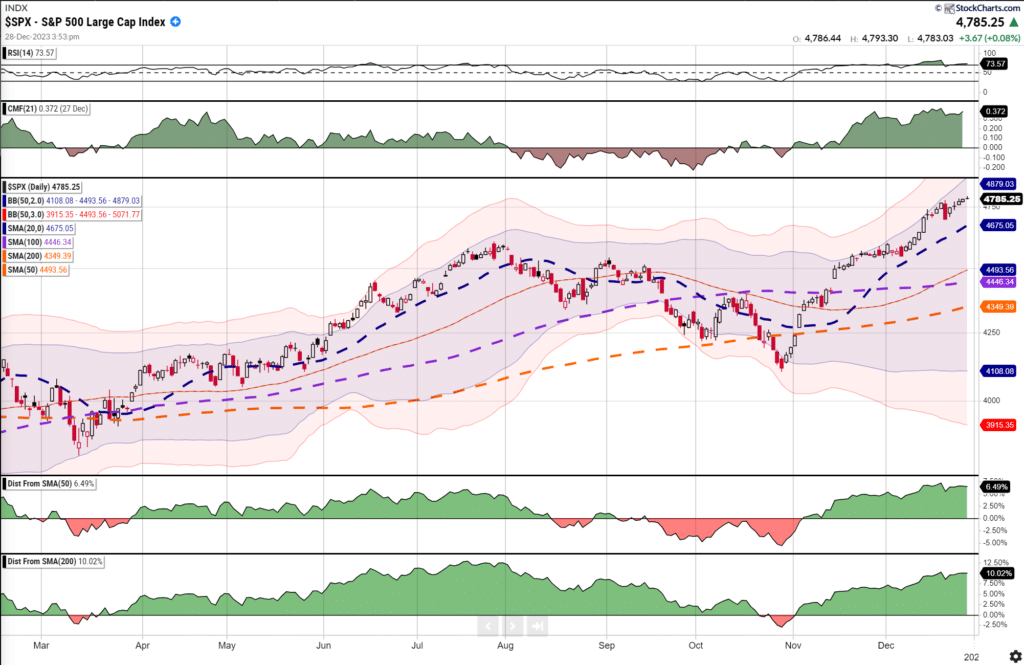
Continue to trade accordingly, but remain long-biased until we get into the New Year. If you haven’t done any tax loss harvesting or just rebalanced portfolio risks, today is the day to do it. The portfolio performance clock resets on Monday as we begin 2024.
In the meantime, have a safe and happy New Year.

The Institutional Appeal of 0DTE Options
Zero-Day to Expiration (0DTE) options have taken Wall Street by storm over the past few years. According to Bloomberg, what started as a mainstream retail trend is being adopted by institutional quant teams at Citigroup, JPMorgan, and UBS. The banks now offer products using 0DTE options, which range from complex diversification strategies to simple income-generating activities. The appeal comes from the fact that 0DTE options lack exposure to overnight moves. Consider a two-week vol selling strategy that benefits from low index dispersion. Traders can now break that strategy up by selling 0DTE options in a calm market, on a smaller scale, and exiting before the close- allowing for more control.
There’s always a risk attached to a new product. With 0DTE options, that risk lies in staying nimble to exit before a trade turns against you. The positions can be volatile depending on the money-ness of the contract in question. Critics of 0DTE options have expressed concerns about their impact on market stability. However, the CBOE has argued that “as trading flows spread out, the peril of a one-sided market is lessened …”
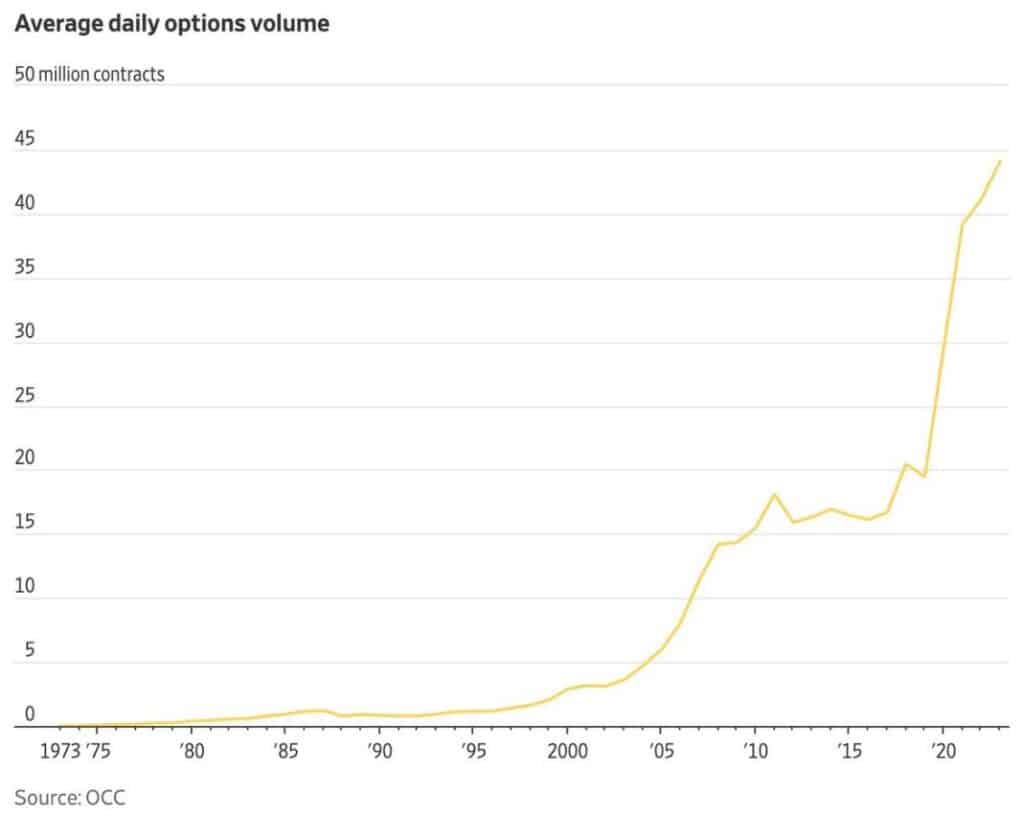
The Next Big Challenge for Apple
AAPL reigns as the supreme smartphone supplier in China, but its Chinese rivals are working towards inroads on AAPL’s dominance. Rumors have surfaced over the past decade that an Apple Car could be in the works, but the company still hasn’t delivered. Per the Wall Street Journal,
Huawei and Xiaomi, whose phones battle the iPhone for supremacy in China, both released new cars this week with advanced digital features. The companies’ goal is to keep their phone customers engaged in high-tech vehicles and seize turf before Apple’s possible entry into the fray.
It depends on how widely adopted the offering is, but software integration between vehicles and phones could be a differentiator that eats into Apple’s market share in China. This isn’t a meaningless development considering that China constitutes roughly a fifth of Apple’s revenue. The article concludes,
Dan Ives, an analyst with Wedbush Securities, said he didn’t think Apple would want to be on the outside looking in for too long. Ives expects an Apple car to arrive sometime around 2026.
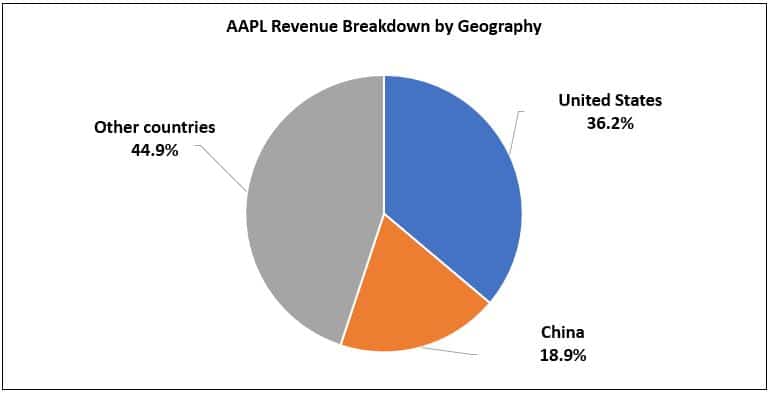
Tweet of the Day
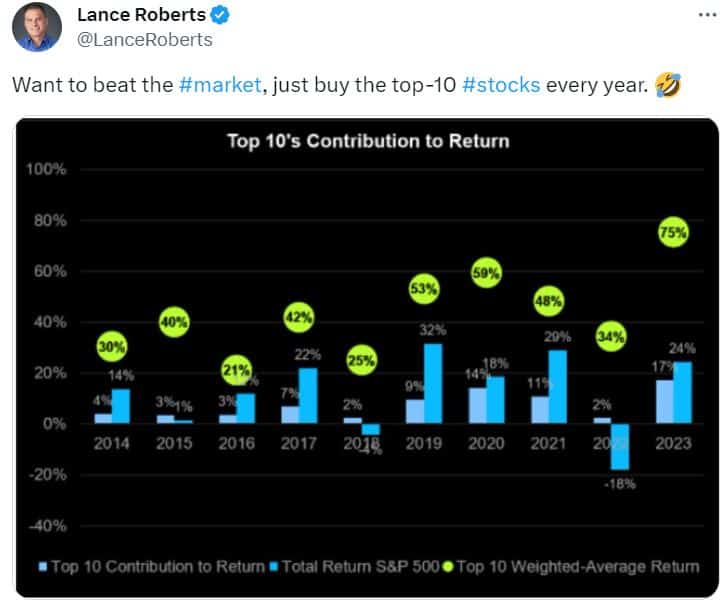
“Want to have better long-term success in managing your portfolio? Here are our 15-trading rules for managing market risks.”
Please subscribe to the daily commentary to receive these updates every morning before the opening bell.
If you found this blog useful, please send it to someone else, share it on social media, or contact us to set up a meeting.
Also Read

















